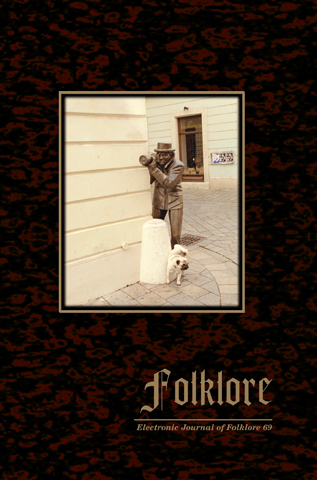Rumour and Humour in #WhereIsPutin and #PutinUmer: Global Media and the Cult of Putin
Rumour and Humour in #WhereIsPutin and #PutinUmer: Global Media and the Cult of Putin
Author(s): Liisi Laineste, Eda KalmreSubject(s): Customs / Folklore, Cultural Anthropology / Ethnology, Culture and social structure
Published by: Eesti Kirjandusmuuseum
Keywords: conspiracy theories; contemporary legend; humour; infotainment; newslore; Putin; rumour; Russia;
Summary/Abstract: The article analyses rumours about Putin’s disappearance from the public eye during the ten-day period in March 2015. Parallels with earlier rumours about Russian leaders before Putin are thus revealed and differences between English and Russian sources of information are pointed at. The data presented here comes from both traditional and social media: the global official news coverage of Putin’s disappearance, and the unofficial information spread in social media via Twitter hashtags #WhereIsPutin and #PutinUmer. Using this data, the authors describe the differences between English- and Russian-language social media sources and indicate the recurring and more influential belief motifs in the stories told about the political leaders in Russia in the junction of various genres (above all rumour, humour, and news). The analysis sheds light on the inner workings of rumour and humour in social media. The comparison shows that even if the world is a ‘global village’ and news, travelling fast, quickly become known around the world, there is a fissure between the content and the ways particular events or cases get represented in the official media outlets and social media. The differences arise from the cultural and historical context of the producers and consumers of the news: collective memory, folklore, vernacular belief, etc.
Journal: Folklore: Electronic Journal of Folklore
- Issue Year: 2017
- Issue No: 69
- Page Range: 91-114
- Page Count: 24
- Language: English

